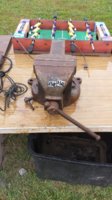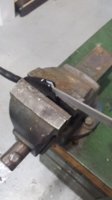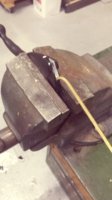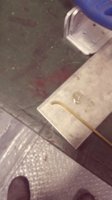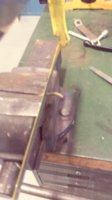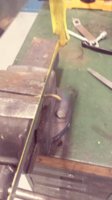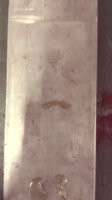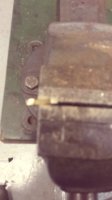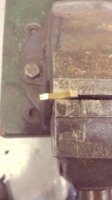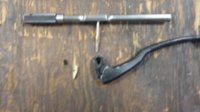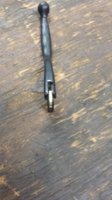Hi guys. Driving around on my XS this past week has been bliss with the unseasonably hot weather here in Ottawa. The only drawback was the persistent clutch drag that makes finding neutral so difficult at a stop. Yes, I have absolutely all slack taken out, and the pin screwed into to lightly bottom against the steel ball.
I have been thinking a lot about this, and I see much experimentation has taken place to find a remedy. i thought about how I could mod the spiral mechanism to make it a two stage system, how to make the spiral steeper, how to increase the cable pull, but nothing really jumped out at me. The spiral mechanism is pretty much as it is going to stay. Then I thought, maybe we could tackle this problem from the other end. I have a spare clutch lever here from my old 650 Seca, and I was looking at how it could be modified to increase the cable pull. I looked at how the cable recedes into the clutch lever as it travels through its arc of operation. There is a deep slot in the lever which allows the lever to travel around its pivot point without interfering with the straight pull of the cable. Then I had a thought, what if we intentionally did interfere with the straight path of the cable. What if, as it sank down into the slot, it found a solid object that prevented it from going further down into the slot This would have the effect of increasing the the distance the cable would have to move, by providing a fulcrum in the lever that the cable was forced to pivot around. I thought that extra travel just might be enough to gain us the extra few tens of thou to get the clutch to disengage cleanly. The pivot could be a roll pin with a bit of stainless tubing around it to allow it to rotate to minimize wear on the cable. Maybe a sold cam shape could be made up and forced into the slot? who knows. Maybe something to while away the oncoming winter months. I'll see if the Seca lever might be the same part as my XS and try something out.
I have been thinking a lot about this, and I see much experimentation has taken place to find a remedy. i thought about how I could mod the spiral mechanism to make it a two stage system, how to make the spiral steeper, how to increase the cable pull, but nothing really jumped out at me. The spiral mechanism is pretty much as it is going to stay. Then I thought, maybe we could tackle this problem from the other end. I have a spare clutch lever here from my old 650 Seca, and I was looking at how it could be modified to increase the cable pull. I looked at how the cable recedes into the clutch lever as it travels through its arc of operation. There is a deep slot in the lever which allows the lever to travel around its pivot point without interfering with the straight pull of the cable. Then I had a thought, what if we intentionally did interfere with the straight path of the cable. What if, as it sank down into the slot, it found a solid object that prevented it from going further down into the slot This would have the effect of increasing the the distance the cable would have to move, by providing a fulcrum in the lever that the cable was forced to pivot around. I thought that extra travel just might be enough to gain us the extra few tens of thou to get the clutch to disengage cleanly. The pivot could be a roll pin with a bit of stainless tubing around it to allow it to rotate to minimize wear on the cable. Maybe a sold cam shape could be made up and forced into the slot? who knows. Maybe something to while away the oncoming winter months. I'll see if the Seca lever might be the same part as my XS and try something out.
Last edited:

